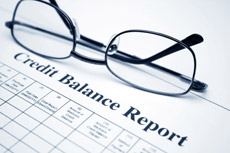Using an Online Credit Report to Your Advantage
Consumers can request a free credit report online, by phone or mail once a year. It reflects one’s payment history and is used by financial institutions, landlords, and other entities. It shows financial institutions whether applicants are able to make payments.
Elements of the Report
The bureaus prepare reports based on different types of data, including account and personal information. They collect information from landlords, financial institutions, merchants, and other parties. Consumers have personal files with data such as employer and employment history, social security number, name, address, and more. The file also shows delinquent accounts, wage garnishments, bankruptcies, liens, and late payments. Inquiries and a summary of the borrower’s payment and credit history are also shown. Generally, lenders and other parties can learn about types of loans used, new credit, and amounts owed. They can use this information to determine the borrower’s debt-to-income ratio, which is an important indicator. The debt-to-income ratio shows what portion of the applicant’s income goes toward debt repayment.
Reports also include information such as bill paying history with mortgage lenders, finance companies, and retailers. There are details such as type of account, date of opening and closing, and late and missed payments. Tax liens, court judgments, and other details from public records are also kept in the borrower’s file. Other details are not included, for example, driving and criminal records, income level, and religious affiliation. Information such as health history, ethnicity and race, and account balances do not appear on it.

Uses of Online Credit Reports
Consumers can request their reports online to check whether there are any errors or incomplete information. This is important because inaccurate information may affect their credit scores and hence, their ability to borrow. Financial institutions often run a credit check when borrowers apply for a mortgage, auto, student, or personal loan. Banks are interested in how much debt you have, the amount of your monthly payment, whether you pay your bills on time, and whether you are a risky borrower.
It is not only lenders that are interested in your account and payment details. Apart from landlords and creditors, this information is used by utility companies, cell phone companies, courts, employers, and insurance companies. They must have a permissible purpose to access information that is found in the customer’s file. In many cases, third parties are not allowed to access personal or financial details unless authorized by the customer.
Inquiries and Types
Customers can request their report, whether online, by mail or phone, and this is considered a soft inquiry. Soft inquiries are requests by employers, marketers, and customers themselves to view the report. Hard inquiries are added when borrowers apply for loans, HELOCs, mortgages, and other financial products. They send signals to lenders that borrowers are in a desperate need for money because of financial problems. Thus, financial institutions view applicants with many hard inquiries as high risk borrowers. Hard inquiries show on reports while soft ones don’t. Inquiries by car dealerships and mortgage lenders stay on the borrower’s file. Don’t allow financial institutions and dealerships to run a credit check unless you are going to apply with them. Having more than 10 inquiries within a period of 6 months will affect your ability to borrow.
Things to Watch for
When you obtain your credit report, you should check for missed and late payments, maxed out cards, and open accounts that you don’t use. Look for accounts that have been turned over to collectors. You should obtain a copy of your report every 6 or 12 months to review for errors that can cause serious financial damage.
Once you have obtained your online report, check for expired, fraudulent, or inaccurate information that could affect your score. You can file a dispute with the reporting agencies. Send letters to all agencies, and they are required to investigate the matter. If they find that your file contains expired or fraudulent information, they will send you a letter to confirm this. They will correct any mistakes, but they cannot delete information that is accurate. Note that different negative records have different expiration dates. Inquiries, for example, will remain for 2 years while collection accounts will show for a period of 7 years. Charge-offs will remain for 7 years while bankruptcy – up to 10 years. Judgments, late payments, and closed accounts will also show for 7 years while tax liens – between 7 and 15 years.
Related Articles
The FICO Score as an Indicator of Creditworthiness and Financial Management Skills
FICO is a credit score system that is based on different factors and used by financial institutions to determine the creditworthiness of applicants. It was developed by the Fair Isaac Corporation and accounts for both negative and positive information. Factors Used to Determine the ScoreFICO is...
Elements and Importance of Credit Reports
A credit report is a record of the payment and borrowing history of a company or an individual. Also known as credit history, it includes information about late payments, delinquencies, consumer proposals, and bankruptcy. The report also includes information such as judgments and tax liens and...
Credit Bureaus and Customer Rights
A credit bureau is an agency that is responsible for collecting financial information for individual borrowers and businesses. Credit reports are sold to lenders and other entities and help them to make decisions on insurance premiums, loans, etc. Clients of credit reporting agencies include...
